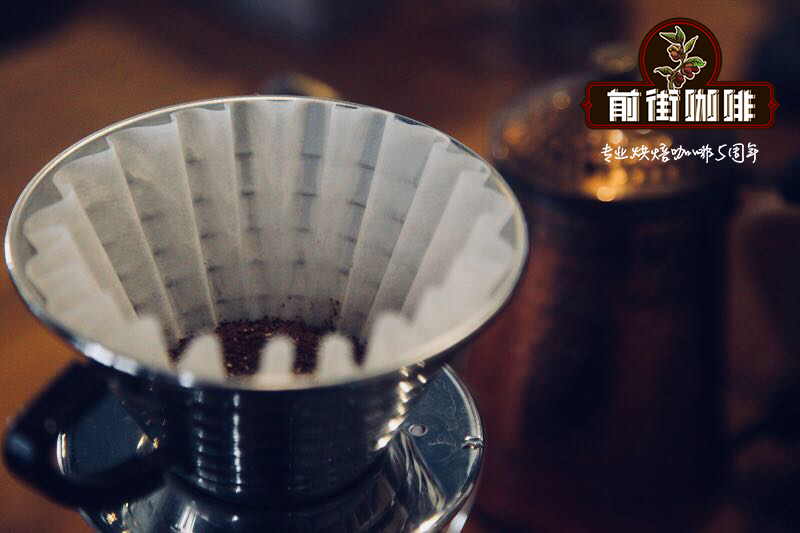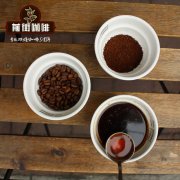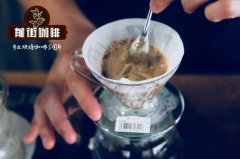Columbia Gem Manor Rose Summer Coffee how to drink _ how does it taste?

Professional coffee knowledge exchange more coffee bean information please follow the coffee workshop (Wechat official account cafe_style)
The Nalinglong producing area is located in the Andes where Colombia joins Ecuador in the southeast. The natural geographical environment divides the Nalinglong producing area into three major topography, the first is the plains along the Pacific coast, the second is the Amazon basin, and then the Andes mountains. The Nalinglong producing area, located near the equator at latitude 0 ℃, receives almost the same number of sunshine hours every day throughout the year, with an average sunshine duration of nearly 2, 000 hours a year.
At the same time, the location and geographical environment, the average annual temperature suitable for coffee growth, the stable temperature change in the morning and evening, the annual rainfall, and the soil rich in organic matter make the coffee trees in Nalinglong producing area thrive at very high altitude. it has a significant effect on the flavor and aroma of coffee.
Over the past few decades, Colombia's main coffee plantations have been in the Andes, Antioquia, Boyaca, Caldas, Cauca, Cesar, Kakota, Casanare, Cundinamarca, Guajira, Wirat, Magdalena, Mehta, Narinho, North Santander, Jindio, Risaralda, Santander, Tolima and Valle de cauca, all with good weather and soil conditions. To accommodate the cultivation of high-density crops. Varieties such as the Greater Arabica sp,Catimor are common, not only to produce high-quality flavored beans, but because warm areas are well suited for Canephora species (common in Venezuela, Brazil and Costa Rica), but these places are conflict zones between FARC and other guerrilla groups. Given the current potential for conflict resolution, Colombia has the opportunity to pay more attention to the growth of Canephora varieties, in particular to address climate change-related issues.
How to make Colombian coffee [gem manor rosy summer]?
Qianjie Coffee hand reference: weigh 15g [gem manor rose summer] coffee powder, pour into the grinder for medium grinding, the finished particles are slightly thicker than salt, we use BG bean grinder to scale 5R (standard sieve pass rate 60%), water temperature 89 degrees, V60 filter cup extraction, recommended powder / water ratio around 1:15.
The hot water in the hand flushing pot draws a circle clockwise with the center of the filter cup. Start the time when brewing, brew the coffee to 30g in 15 seconds, then stop the water injection, and when the time is up to 1 minute, the second water injection. The second water injection is the same as before, draw a circle clockwise with the center of the filter cup, and the water flow should not rush to the place where the coffee powder is connected with the filter paper, so as not to produce channel effect.
Coffee powder to the outermost circle to set aside a circle, and then another circle to the middle, 2 minutes 20 seconds, to the coffee to 220g, brewing coffee is finished.
| Japanese Ice hand Chong [Rose Summer of Gem Manor]
Qianjie Coffee Ice hand to make [gem Manor Rose Summer] reference:
Colombian coffee [gem manor rose summer], light and medium roasted, BG bean grinder scale 5m (standard sieve pass rate 67%)
20 grams of powder, 150 grams of ice, 150 grams of hot water. The water temperature is 90 ℃ higher than the recommended normal hand flush, then 1 ℃ higher, the normal grinding small Fuji 3.5 scale, the ice hand flushing is slightly smaller than half a grid-small Fuji 3 scale, the recommended powder (water + ice) ratio is 1:15.
The amount of steaming water is 40 grams and the steaming time is 30 seconds.
Water injection by stages, 60 grams of water in the first section and 40 grams of water in the second section. Use a thin but high water injection column and stir hard to make the coffee powder fully tumble, but be careful that the water level is not too high and do not rush to the edge of the filter paper.
The whole extraction time is about two and a half minutes (close to the normal extraction time of 20 grams of powder).
END
Important Notice :
前街咖啡 FrontStreet Coffee has moved to new addredd:
FrontStreet Coffee Address: 315,Donghua East Road,GuangZhou
Tel:020 38364473
- Prev

How is the coffee made by hand at Columbia Sweet Cherry Paradise Manor? is it good in Colombia?
Professional coffee knowledge exchange more coffee bean information please follow the coffee workshop (Wechat official account cafe_style) Cauca Cauca province is located in the southwest of Colombia, accounting for 8% of Colombia's total coffee production. It is a certified coffee producing area in Colombia, with an average elevation of 1758 meters above sea level, and the highest elevation can rise to 2100 meters. Cauca is 80% mountainous, with other products.
- Next

Colombia Juandi Manor Coffee Bean hand how to make _ Juandizi Brand Coffee
Professional coffee knowledge exchange more coffee bean information please follow the coffee workshop (Wechat official account cafe_style) why choose Colombian coffee? ● national brand image, has many years of experience and technology in growing coffee, and through the enthusiastic dedication of coffee experts to coffee, ● has more than 500.000 coffee farmers working hard for this cause ● 100%
Related
- Detailed explanation of Jadeite planting Land in Panamanian Jadeite Manor introduction to the grading system of Jadeite competitive bidding, Red bid, Green bid and Rose Summer
- Story of Coffee planting in Brenka region of Costa Rica Stonehenge Manor anaerobic heavy honey treatment of flavor mouth
- What's on the barrel of Blue Mountain Coffee beans?
- Can American coffee also pull flowers? How to use hot American style to pull out a good-looking pattern?
- Can you make a cold extract with coffee beans? What is the right proportion for cold-extracted coffee formula?
- Indonesian PWN Gold Mandrine Coffee Origin Features Flavor How to Chong? Mandolin coffee is American.
- A brief introduction to the flavor characteristics of Brazilian yellow bourbon coffee beans
- What is the effect of different water quality on the flavor of cold-extracted coffee? What kind of water is best for brewing coffee?
- Why do you think of Rose Summer whenever you mention Panamanian coffee?
- Introduction to the characteristics of authentic blue mountain coffee bean producing areas? What is the CIB Coffee Authority in Jamaica?

